Related Research Articles

The saxophone is a type of single-reed woodwind instrument with a conical body, usually made of brass. As with all single-reed instruments, sound is produced when a reed on a mouthpiece vibrates to produce a sound wave inside the instrument's body. The pitch is controlled by opening and closing holes in the body to change the effective length of the tube. The holes are closed by leather pads attached to keys operated by the player. Saxophones are made in various sizes and are almost always treated as transposing instruments. A person who plays the saxophone is called a saxophonist or saxist.

Rhapsody in Blue is a 1924 musical composition for solo piano and jazz band, which combines elements of classical music with jazz-influenced effects. Commissioned by bandleader Paul Whiteman and written by George Gershwin, the work premiered in a concert titled "An Experiment in Modern Music" on February 12, 1924, in Aeolian Hall, New York City. Whiteman's band performed the rhapsody with Gershwin playing the piano. Whiteman's arranger Ferde Grofé orchestrated the rhapsody several times including the 1924 original scoring, the 1926 pit orchestra scoring, and the 1942 symphonic scoring.

Ferdinand Rudolph von Grofé, known as Ferde Grofé was an American composer, arranger, pianist, and instrumentalist. He is best known for his 1931 five-movement symphonic poem, Grand Canyon Suite, and for orchestrating George Gershwin's Rhapsody in Blue for its 1924 premiere.

Richard Gavin Bryars is an English composer and double bassist. He has worked in jazz, free improvisation, minimalism, historicism, avant-garde, and experimental music.
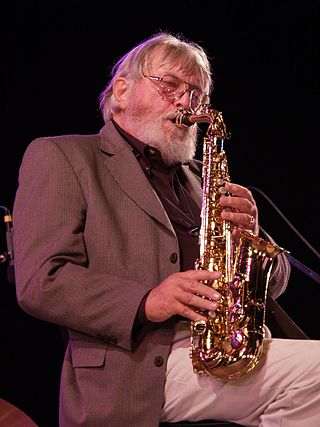
Clifford Everett "Bud" Shank Jr. was an American alto saxophonist and flautist. He rose to prominence in the early 1950s playing lead alto and flute in Stan Kenton's Innovations in Modern Music Orchestra and throughout the decade worked in various small jazz combos. He spent the 1960s as a first-call studio musician in Hollywood. In the 1970s and 1980s, he performed regularly with the L. A. Four. Shank ultimately abandoned the flute to focus exclusively on playing jazz on the alto saxophone. He also recorded on tenor and baritone sax. His most famous recording is probably the version of "Harlem Nocturne" used as the theme song in Mickey Spillane's Mike Hammer. He is also known for the soundtrack recordings with his group to the surfing films of Bruce Brown in the late 1950s and early 1960s, and for the alto flute solo on the song "California Dreamin'" recorded by the Mamas & the Papas in 1965.

Gerald Joseph Mulligan, also known as Jeru, was an American jazz saxophonist, clarinetist, composer and arranger. Though primarily known as one of the leading jazz baritone saxophonists—playing the instrument with a light and airy tone in the era of cool jazz—Mulligan was also a significant arranger working with Claude Thornhill, Miles Davis, Stan Kenton, and others. His piano-less quartet of the early 1950s with trumpeter Chet Baker is still regarded as one of the best cool jazz ensembles. Mulligan was also a skilled pianist and played several other reed instruments. Several of his compositions including "Walkin' Shoes" and "Five Brothers", have become standards.

Michael Arnold Kamen was an American composer, orchestral arranger, orchestral conductor, songwriter, record producer and musician.
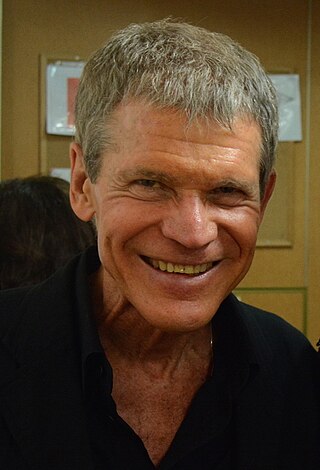
David William Sanborn was an American alto saxophonist. Sanborn worked in many musical genres; his solo recordings typically blended jazz with instrumental pop and R&B. He began playing the saxophone at the age of 11 and released his first solo album, Taking Off, in 1975. He was active as a session musician, and played on numerous albums by artists including Stevie Wonder, Bruce Springsteen, Aretha Franklin, Sting, the Eagles, Rickie Lee Jones, James Brown, George Benson, Carly Simon, Elton John, Bryan Ferry and the Rolling Stones. He released more than 20 albums and won six Grammy awards.
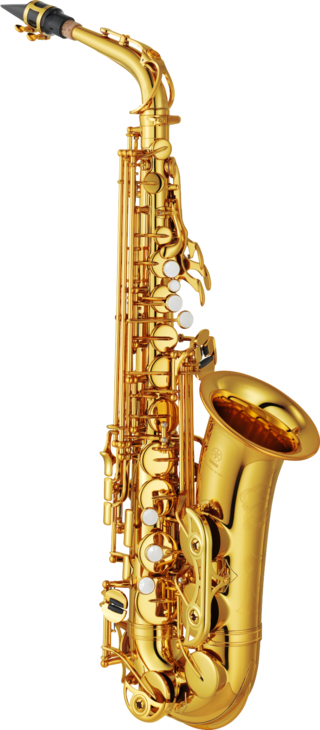
The alto saxophone is a member of the saxophone family of woodwind instruments. Saxophones were invented by Belgian instrument designer Adolphe Sax in the 1840s and patented in 1846. The alto saxophone is pitched in the key of E♭, smaller than the B♭ tenor but larger than the B♭ soprano. It is the most common saxophone and is used in popular music, concert bands, chamber music, solo repertoire, military bands, marching bands, pep bands, carnatic music, and jazz.
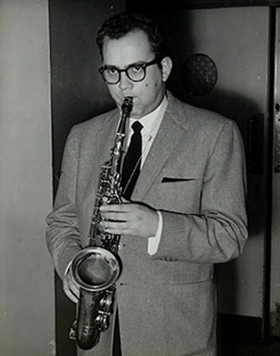
Leonard Niehaus was an American alto saxophonist, composer and arranger on the West Coast jazz scene. He played with the Stan Kenton Orchestra and served as one of Kenton's primary staff arrangers. He also played with Ray Vasquez and trombonist and Vocalist, Phil Carreon and other jazz bands on the U.S. West Coast. Niehaus had a close association as composer and arranger on motion pictures produced by Clint Eastwood.

Sigurd Manfred Raschèr was an American saxophonist born in Germany. He became an important figure in the development of the 20th century repertoire for the classical saxophone.

Eugene Ellsworth Rousseau was an American classical saxophonist. He played mainly the alto and soprano saxophones, though early in his career he was equally active as a clarinetist.
The Concerto in E flat major for alto saxophone and string orchestra, Op. 109, was written by Alexander Glazunov in 1934. The piece lasts about fourteen minutes and is played without pause. It is deeply rooted in Romanticism, and has entered the standard saxophone repertoire.
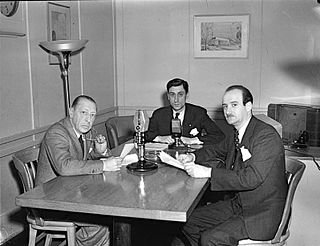
Igor Stravinsky wrote the Ebony Concerto in 1945 for the Woody Herman band known as the First Herd. It is one in a series of compositions commissioned by the bandleader and clarinetist featuring solo clarinet, and the score is dedicated to him. It was first performed on March 25, 1946 in Carnegie Hall in New York City, by Woody Herman's Band, conducted by Walter Hendl.
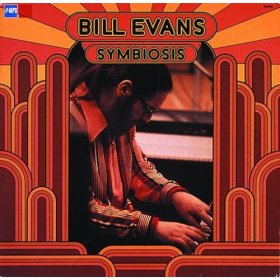
Symbiosis is an album by jazz pianist Bill Evans with an orchestra playing a two-movement work composed by conductor Claus Ogerman, recorded in February 1974 and originally released on the German MPS label.
Amy Dickson is an Australian classical saxophone player.
Timothy M. Ries is an American saxophonist, composer, arranger, band leader, and music educator at the collegiate/conservatory level. Ries is in his eighteenth year as a professor of jazz studies at the University of Toronto. His universe of work as composer, arranger, and instrumentalist ranges from rock to jazz to classical to experimental to ethno to fusions of respective genres thereof. His notable works with wide popularity include The Rolling Stones Project, a culmination of jazz arrangements of music by the Rolling Stones produced on two albums, the first in 2005 and the second in 2008.
The Saxophone Concerto is a composition for alto saxophone and orchestra by the American composer John Adams. The work was jointly commissioned by the Sydney Symphony Orchestra, the St. Louis Symphony, the Baltimore Symphony Orchestra, and Orquestra Sinfônica do Estado de São Paulo Foundation. It was given its world premiere in Sydney, Australia on August 22, 2013 by the saxophonist Timothy McAllister and Sydney Symphony Orchestra under the direction of Adams.
The Concerto for Piano and Orchestra is a musical composition by the American composer Aaron Copland. The work was commissioned by the conductor Serge Koussevitzky who was then music director of the Boston Symphony Orchestra. It was first performed on January 28, 1927, by the Boston Symphony Orchestra conducted by Koussevitzky with the composer himself as the soloist. The piece is dedicated to Copland's patron Alma Morgenthau Wertheim.

Fantasia for saxophone, three horns, and strings, W. 490, is a concertante work in three movements by the Brazilian composer Heitor Villa-Lobos, written in 1948. A performance of it lasts approximately ten minutes.
References
- 1 2 Heckman, Don (December 30, 1990). "JAZZ: MICHAEL KAMEN DAVID SANBORN "Concerto for Saxophone"". Los Angeles Times . Retrieved October 29, 2024.
- ↑ Aquilina, Jessica (February 26, 2013). "Movie music gets a classical twist". St George and Sutherland Shire Leader . Retrieved October 29, 2024.
- ↑ Cunningham, Harriet (February 26, 2013). "Classical treatment delivers silver screen gold". The Sydney Morning Herald . Retrieved October 29, 2024.
- ↑ Arloff, Steve (April 14, 2014). "Review: Catch Me If You Can". MusicWeb International. Retrieved October 29, 2024.